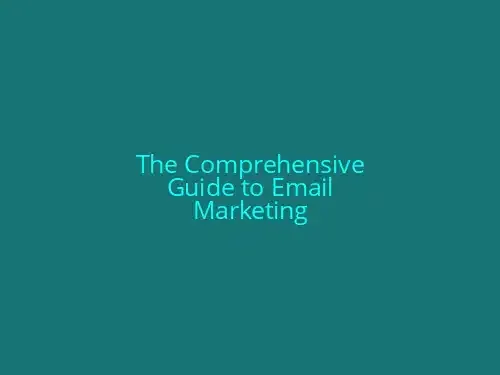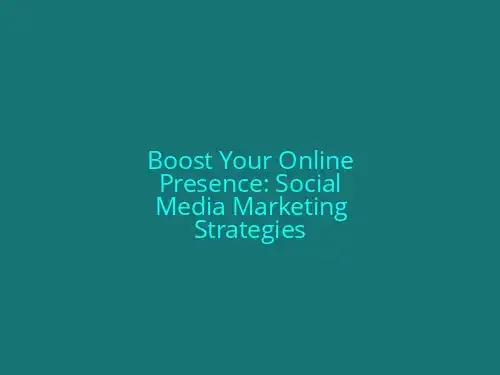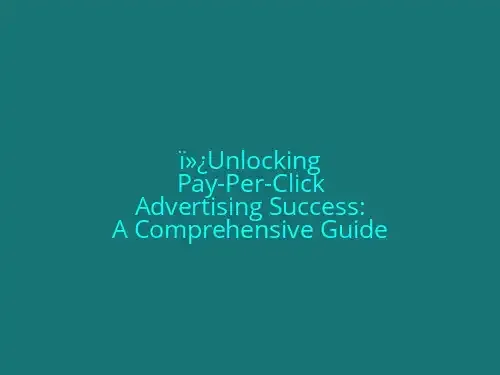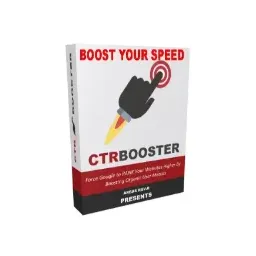
The Comprehensive Guide to Email Marketing
Section 1: Identify Search Intent**\nTo create an SEO-optimized article outline for the keyword Email Marketing, start by analyzing the search engine results page (SERP) to understand the types of content that perform well for this keyword. This includes identifying the content formats that rank high, such as listicles, how-to guides, opinion-based articles, video content, reviews, or product pages.\nFor instance, common email marketing content formats include:\n- Listicles: 10 Benefits of Email Marketing\n- How-to guides: How to Start an Email Marketing Campaign\n- Opinion-based articles: The Future of Email Marketing: Trends and Predictions\n- Video content: Email Marketing Tutorial for Beginners\n- Reviews: Best Email Marketing Software for Small Businesses\n- Product pages: Product Overview: Email Marketing Software\nIdentify the search intent behind these content formats. Are they informational, navigational, or transactional? Informational content typically answers a question or provides a definition, while navigational content directs users to a specific page or website. Transactional content aims to facilitate a transaction or conversion.\nUnderstanding the search intent is crucial because it helps you tailor your content to meet the needs of your audience. For example, if you find that informational content about email marketing strategies performs well, your article should provide actionable tips and insights to educate readers.\nBy analyzing the SERP and identifying the search intent, you can create a content strategy that effectively addresses the needs of your target audience.**Section 2: Identify Search Intent**\nTo create an SEO-optimized article outline for the keyword Email Marketing, it is crucial to analyze the search engine results page (SERP) to understand the types of content that perform well for this keyword. This includes identifying the different types of content that rank high, such as listicles, how-to guides, opinion-based articles, video content, reviews, or product pages.\n1. **Analyze SERP**:\n - Look at the top-ranking pages to see what types of content are performing well.\n - Identify the keywords used in the titles, meta descriptions, and headings of these pages.\n - Note the format of the content, such as whether it is a listicle, a step-by-step guide, or a review.\n2. **Use Keyword Tools**:\n - Utilize tools like Google Keyword Planner, Ahrefs, or SEMRush to find the most relevant keywords related to Email Marketing.\n - Analyze the search volume, competition, and cost per click (CPC) for each keyword.\n - Filter the results to focus on long-tail keywords with lower competition and higher search volume.\n3. **Determine User Intent**:\n - Identify the intent behind the keyword search, whether it is informational, navigational, commercial, or transactional.\n - Use tools like SEMRush’s Keyword Overview to determine the intent behind each keyword.\n - Filter the keywords based on intent to create a content strategy that addresses the user’s needs.\n4. **Refine the Outline**:\n - Use the analyzed SERP and keyword data to create a structured outline for your article.\n - Ensure each section has a clear purpose and does not overlap with others.\n - Use tools like SEMRush’s Outline Builder to refine your outline and optimize it for SEO.\nBy following these steps, you can create an SEO-optimized article outline that addresses the user’s intent, uses relevant keywords, and provides valuable insights to the reader.**Section 3: Utilize Long-Tail Keywords**\nTo create an SEO-optimized article outline for the keyword Email Marketing, utilize long-tail keywords that have a high search volume and low keyword difficulty. Long-tail keywords are highly specific search queries that have lower search volumes but more refined intent. They can help you target specific aspects of your topic and attract targeted traffic.\nTools like Ahrefs or SEMRush can help you find long-tail keywords. For example, here are some long-tail keywords related to Email Marketing:\n- Benefits of Email Marketing\n- Email Marketing Strategies for Small Businesses\n- Best Email Marketing Software for SaaS Companies\nUse these long-tail keywords to create a structured outline that addresses specific aspects of Email Marketing. Ensure each section has a clear purpose and does not overlap with others. This will help you create content that is relevant and valuable to your target audience.\nHere are some examples of long-tail keywords for the topic Email Marketing:\n- **Benefits of Email Marketing**:\n - Increased Conversion Rates\n - Cost-Effective\n - Targeted Audience\n- **Email Marketing Strategies**:\n - Lead Nurturing\n - Segmentation\n - Behavioral Targeting\n - Engagement\n - Automation\n- **Best Email Marketing Software**:\n - HubSpot\n - ActiveCampaign\n - Drip\n - ConvertKit\n - Klaviyo\n - MailerLite\n - SendinBlue\n - Moosend\n- **Examples of Effective Email Marketing**:\n - Grammarly\n - MailChimp\n - Trello\n - Zapier\n - Hubspot\nBy incorporating these long-tail keywords into your article outline, you can create content that is optimized for search engines and appeals to users with specific search queries.**Section 4: Organize the Outline**\nTo create an SEO-optimized article outline for the keyword Email Marketing, follow these steps:\n1. **Identify Search Intent**:\n - Analyze the search engine results page (SERP) to understand the types of content that perform well for this keyword, such as listicles, how-to guides, opinion-based articles, video content, reviews, or product pages.\n2. **Define the Contents Unique Selling Point**:\n - Determine what sets your content apart from others. This could be unique insights, exclusive data, or expert opinions.\n3. **Utilize Long-Tail Keywords**:\n - Use tools like Ahrefs or SEMRush to find long-tail keywords that have a high search volume and low keyword difficulty. Examples:\n - Benefits of Email Marketing\n - Email Marketing Strategies for Small Businesses\n - Best Email Marketing Software for SaaS Companies\n4. **Organize the Outline**:\n - Use the long-tail keywords to create a structured outline that addresses specific aspects of Email Marketing. Ensure each section has a clear purpose and does not overlap with others.\n5. **Use SEO Tools to Refine the Outline**:\n - Tools like SEMRushs Outline Builder and Answer the Public can help you refine your outline by providing additional keyword insights and hidden opportunities.\nHeres a sample outline for an article on Email Marketing:\n**Title:** The Comprehensive Guide to Email Marketing\n**I. Introduction**:\n- Definition of Email Marketing\n- Brief History of Email Marketing\n**II. Benefits of Email Marketing**:\n- Increased Conversion Rates\n- Cost-Effective\n- Targeted Audience\n**III. Email Marketing Strategies**:\n- Lead Nurturing\n- Segmentation\n- Behavioral Targeting\n- Engagement\n- Automation\n**IV. Best Email Marketing Software**:\n- HubSpot\n- ActiveCampaign\n- Drip\n- ConvertKit\n- Klaviyo\n- MailerLite\n- SendinBlue\n- Moosend\n**V. Examples of Effective Email Marketing**:\n- Grammarly\n- MailChimp\n- Trello\n- Zapier\n- Hubspot\n**VI. Conclusion**:\n- Summary of Key Points\n- Next Steps for Effective Email Marketing\n**VII. Additional Tips and Tricks**:\n- Avoiding Spam Filters\n- Crafting Compelling Subject Lines\n- Measuring Email Campaign Success\nBy following this outline, you can create an SEO-optimized article that addresses various aspects of Email Marketing and provides valuable insights for readers.
read more →
Boost Your Online Presence: Social Media Marketing Strategies
Social media has revolutionized the way businesses connect with their customers and prospects.
Today, it is crucial for businesses to have a strong online presence through effective social media marketing. This comprehensive guide will explore the significance of social media marketing and provide actionable strategies for you to boost your online presence.
Why Social Media Marketing Matters.In a competitive digital landscape, having a solid social media strategy is vital to stay ahead of the curve. Social media platforms are where buyers and customers engage, seeking guidance, advice, and resources. By leveraging social media, you can build trust, generate leads, nurture relationships, and ultimately drive conversions..
![marketing tutor]() The Impact of Social Media on Business.
The Impact of Social Media on Business.
Social media is no longer just a platform for personal use. It has become a powerful tool for businesses to reach their target audience, increase brand awareness, and grow their customer base.
With billions of active users across various platforms, the potential for engagement and conversion is unparalleled.. Importance of Consistency.
Consistency is key in social media marketing. Regular posting schedules and engagement with your audience keep them informed and interested in your brand.
This consistency helps build trust and loyalty, leading to long-term customer relationships.
Effective Social Media Marketing.
Social media marketing is not just about posting content; it is about creating meaningful conversations and relationships. To achieve this, you need to understand your target audience, craft compelling content, and engage actively with your audience.This approach will help you build a strong online presence and drive business results..
Social media marketing is a critical component of any digital marketing strategy. By understanding the importance of social media marketing, choosing the right platforms, and creating engaging content, you can effectively reach and engage your target audience.
In this comprehensive guide, we will delve into the strategies and tools you need to unlock the power of social media marketing and take your business to the next level.. Keywords:.-
Image Optimization:.-
- Use descriptive file names and alt text for images..-
- Include relevant keywords in image captions.. Internal and External Linking:.-
- Link to other relevant articles on your website..-
- Link to authoritative sources for further reading..
Mobile Optimization:.-
- Ensure the article is responsive and mobile-friendly..
- Page Speed Optimization:.-
- Optimize images and content to reduce load times..
- Publish and Promote:.-
- Publish the article on your website and social media platforms..-
- Share it in relevant online communities and forums.
Setting Up Your Social Media Foundation
Setting up a solid social media foundation is crucial for any business. Here are the key steps to ensure you get started on the right foot:. Choosing the Right Social Media Platforms.- Understand Your Target Audience: Identify which social media platforms your target audience is most active on. For example, if your audience is mostly professionals, LinkedIn may be a better choice. If they are younger, Instagram or TikTok might be more effective..
- Create Engaging Social Media Profiles: Craft profiles that accurately represent your brand and are visually appealing. Ensure your profiles are complete and consistent across all platforms.
- Understanding Your Target Audience: Create buyer personas to understand your audiences demographics, interests, behaviors, and pain points.
Consistency.
Ensure your branding and messaging are consistent across all platforms.
Authenticity
Be genuine and authentic in your online presence..-
Professionalism:
Tools and Resources.-
Hootsuite. A popular social media management tool for scheduling and posting content.
Sprout Social. A comprehensive suite for social media management, analytics, and engagement..-
Social media analytics tools
Utilize analytics tools to track performance, monitor engagement, and adjust strategies accordingly..
Common Mistakes to Avoid.-
- Inconsistent Posting: Dont neglect to post regularly, as this can negatively impact engagement and visibility..-
- Lack of Engagement: Fail to engage with your audience, and your content will not reach its full potential..-
- Unprofessional Profiles: Dont neglect the importance of professional profiles, as they are often the first impression people have of your brand.
By following these steps and best practices, you can establish a strong social media foundation that sets the stage for successful social media marketing campaigns.Section.
Crafting a Social Media Strategy.
Crafting a social media strategy is crucial to achieving your online goals.
Here are the key steps to follow:. Defining Your Social Media Goals.
Identify Your Objectives: Determine what you want to achieve through your social media marketing campaign. This could be increasing brand awareness, generating leads, or driving conversions..2. Set Specific, Measurable, Achievable, Relevant, and Time-bound (SMART) Goals: Define your goals in a clear and actionable manner. This will help you measure your success and adjust your strategy accordingly.. Identifying Your Unique Selling Points.
Know Your Competitors: Research your competitors strengths and weaknesses to understand what sets you apart.
Highlight Your Unique Features: Emphasize the unique benefits and value your business offers to attract and retain your target audience.. Developing a Content Calendar.
Plan Your Content: Create a calendar outlining the types of content to post, the frequency, and the schedule..
Include a Mix of Content Formats:
Incorporate different formats such as blog posts, videos, images, infographics, and live videos to keep your audience engaged..
Additional Tips for Crafting a Solid Strategy.
- Stay Consistent: Regularly post content to maintain a consistent presence and keep your audience engaged..
- Monitor and Adjust: Continuously track your performance and adjust your strategy based on the insights gained from analytics tools..
- By following these steps, you can craft a comprehensive social media strategy tailored to your business needs and goals, allowing you to effectively engage your audience and drive conversions.
Content Creation and Curation.
Content Creation: Types of Content to Post.
Blog Posts.- Why Social Media Matters:
Highlight the benefits of social media marketing and the importance of a strong online presence..- How to Choose the Right Platforms: Discuss the different social media platforms and which ones are best for your target audience..
Videos.- Social Media Marketing Basics: Break down the fundamentals of social media marketing and how to get started.. Images.- Visual Storytelling: Explore the power of images and how they can enhance your social media content..
Infographics.- Social Media Statistics:
Create visually engaging infographics to present social media statistics and trends..
Content Curation.- What to Share: Discuss the types of content to curate and share on social media, such as industry news and relevant articles..-
Content Aggregation Tools: Introduce tools that can help streamline content curation, such as Feedly and Flipboard..-
Content Repurposing: Show how to repurpose existing content into different formats to maximize its reach..
Creating Engaging and Shareable Content.
Content that Resonates.- Empathy and Authenticity: Share content that shows empathy and authenticity, connecting with your audience on a personal level..-
Visual Appeal: Use high-quality visuals and graphics to make your content stand out..
Strategies for Content Curation.
Curating Industry News.-
Industry News and Trends: Share industry news and trends to keep your audience informed and engaged..
Curating Relevant Articles.- Relevant Articles and Resources: Curate relevant articles and resources to provide valuable information to your audience.. Curating User-Generated Content.-
Encourage your audience to create and share content related to your brand or industry..
Content Calendar.-
Content Calendar: Create a content calendar to plan and schedule your content in advance..
Consistency is Key.-
Posting Schedule: Maintain a consistent posting schedule to keep your audience engaged..
Engagement and Feedback.-
Engage with Your Audience: Respond to comments and messages to foster community engagement and build trust..
Content Repurposing.-
Repurpose Your Content: Repurpose existing content into different formats to maximize its reach and reduce redundancy..
Analytics and Feedback.-
Track Your Performance: Use analytics tools to track your performance and adjust your strategy based on the data insights.
.By following these strategies for content creation and curation, you can develop a strong online presence, engage your audience, and drive conversions. read more →

Unlocking Pay-Per-Click Advertising Success: A Comprehensive Guide
Definition of B2B Marketing.
B2B marketing refers to the strategic processes and tactics used to promote products or services from one business to another. Unlike B2C (business-to-consumer) marketing, B2B marketing involves a more complex and targeted approach due to the higher value and longer sales cycles of B2B transactions.
Importance of Effective Marketing Strategies for B2B Companies
In the B2B world, effective marketing strategies are crucial for driving growth, increasing ROI, and establishing a competitive edge. This is because B2B buyers are often meticulous and thorough in their research, considering multiple factors and evaluating different options before making a purchase decision. To succeed, B2B companies must develop and execute comprehensive marketing plans that cater to the needs and pain points of their target audience.
By understanding these fundamental principles, businesses can create targeted marketing strategies that resonate with their audience and drive business success. In the following sections, we will explore the key B2B marketing strategies and tactics that can help you achieve your goals, including search engine optimization (SEO), email marketing, content marketing, and social media marketing.
This introduction sets the stage for the article by defining B2B marketing, highlighting its importance in the business world, and outlining the key strategies that will be discussed. It aims to provide a solid foundation for readers to understand the significance of effective B2B marketing and how it can drive business success.
- B2B Marketing Strategies
- Search Engine Optimization (SEO)
- Keyword Research and Optimization
- Identify target keywords and phrases relevant to your B2B business.
- Conduct thorough keyword research using tools such as Google Keyword Planner and Ahrefs.
- Optimize on-page elements like meta tags, headings, and image alt tags with targeted keywords.
- On-Page SEO Techniques
- Meta Tags:
- Include meta title, meta description, and meta keywords.
- Headings
- Organize content using H2, H2, H3, and H4 headings.
- Image Optimization
- Use descriptive alt tags and captions to enhance image relevance and accessibility.
- Content Creation for SEO
High-Quality Content
Write engaging, informative, and well-structured blog posts.Variety in Content Form. Use different formats like articles, videos, infographics, and podcasts.
Targeted Content: Address specific needs and pain points of your business clients.
Email Marketing
Segmenting Subscribers
Categorize Subscribers
Segment email lists based on demographics, preferences, and behaviors- Personalized Messages
- Tailor content to specific segments for higher engagement.
- Sending Different Types of Emails.
- Newsletters.
- Regular newsletters with company updates, promotions, and industry insights.
- Promotional Emails. Special offers, discounts, and product announcements.
- Educational
- In-depth guides, tutorials, and industry trends.
- Using Tools to Simplify the Emailing Process.
- Email Marketing Software.
- Utilize tools like Mailchimp, Constant Contact, or HubSpot for automation and analytics.
- Content Marketing.
- Creating High-Quality, Informative Content.
- Write detailed, well-researched blog posts on topics relevant to your target audience.
- Videos and Infographics.
- Visual content formats to engage and educate your audience.
- Addressing the Needs of Business Clients.
- Industry Insights
- Share knowledge and trends related to your industry.
Social Media Marketing
Creating and Maintaining Social Media Profiles
Profile Optimization: Complete profiles with relevant keywords, descriptions, and logos.\n-
Content Sharing
Share content from other platforms, like blogs and websites.
Paid Social Media Advertising\
Targeted Ads: Use platforms like LinkedIn, Facebook, and Twitter for targeted paid advertising.\n-
Budget Allocation:
Allocate a budget for ad campaigns and monitor performance.
Short-Form Video Marketing
Short, Informative Videos
Share short videos highlighting product features, company news, and industry insights.\nThese strategies will help you create a comprehensive B2B marketing plan, increasing visibility, engagement, and ultimately, conversions for your business-to-business marketing campaign.### III. Developing a B2B Marketing Plan\nDeveloping a B2B marketing plan involves several crucial steps that ensure your marketing efforts are focused, measurable, and aligned with your business goals. Here are the key components to include in your plan
Defining the Marketing Mix.
Identify your target markets
Determine which industries, companies, or specific roles your products or services cater to. This helps you tailor your marketing efforts to effectively reach and engage your audience.
Outline your marketing objectives
Clearly define what you want to achieve through your marketing strategy. This could include increasing brand awareness, generating leads, or boosting sales.
Creating a Marketing Strategy.
Marriage market conditions with company goals.
Align your marketing efforts with the needs and challenges of your target market, ensuring that your solutions address their pain points.
Develop an actionable roadmap:
Break down your marketing objectives into actionable steps. This includes choosing the right marketing channels, setting budgets, and establishing timelines.
Use a marketing plan template.
Utilize a template to organize your plan, ensuring that all essential elements are covered. This helps in keeping your plan structured and easy to execute.
By following these steps, you can create a comprehensive B2B marketing plan that sets you up for success. Remember to regularly review and refine your plan to ensure it remains effective in driving business growth and ROI improvement.
Developing a B2B Marketing Plan
Developing a comprehensive B2B marketing plan is crucial for achieving success in the competitive business-to-business market. This plan serves as a blueprint for all marketing activities, ensuring that all efforts are aligned with the companys goals and objectives.
Defining the Marketing Mix
To start, identify your target markets and outline your marketing objectives. This involves understanding the demographics, objectives, behavior, and budget of your typical customers. This information helps in crafting a targeted marketing strategy.Creating a Marketing Strategy\nThe marketing strategy builds upon the marketing mix by marrying market conditions with your companys goals. It provides an actionable roadmap with specific channels and metrics to measure success.
Using a Marketing Plan Template\nTo streamline the process, use a marketing plan template. This template helps in compiling essential information such as business summary, target market, market strategy, budget, marketing channels, and marketing technology. It ensures that all necessary details are covered, and the plan remains flexible enough to adapt to changes as new data emerges. By following these steps, you can create a robust B2B marketing plan that drives growth and improves ROI.
The key is to maintain a focus on your target audience and continually refine your strategy based on performance metrics.
This section provides a detailed overview of developing a B2B marketing plan, emphasizing the importance of a marketing mix and a marketing strategy. It also highlights the use of a marketing plan template to streamline the process.
This information will help businesses establish a strong foundation for their marketing efforts and achieve long-term success. read more →

 The Impact of Social Media on Business.
The Impact of Social Media on Business.

